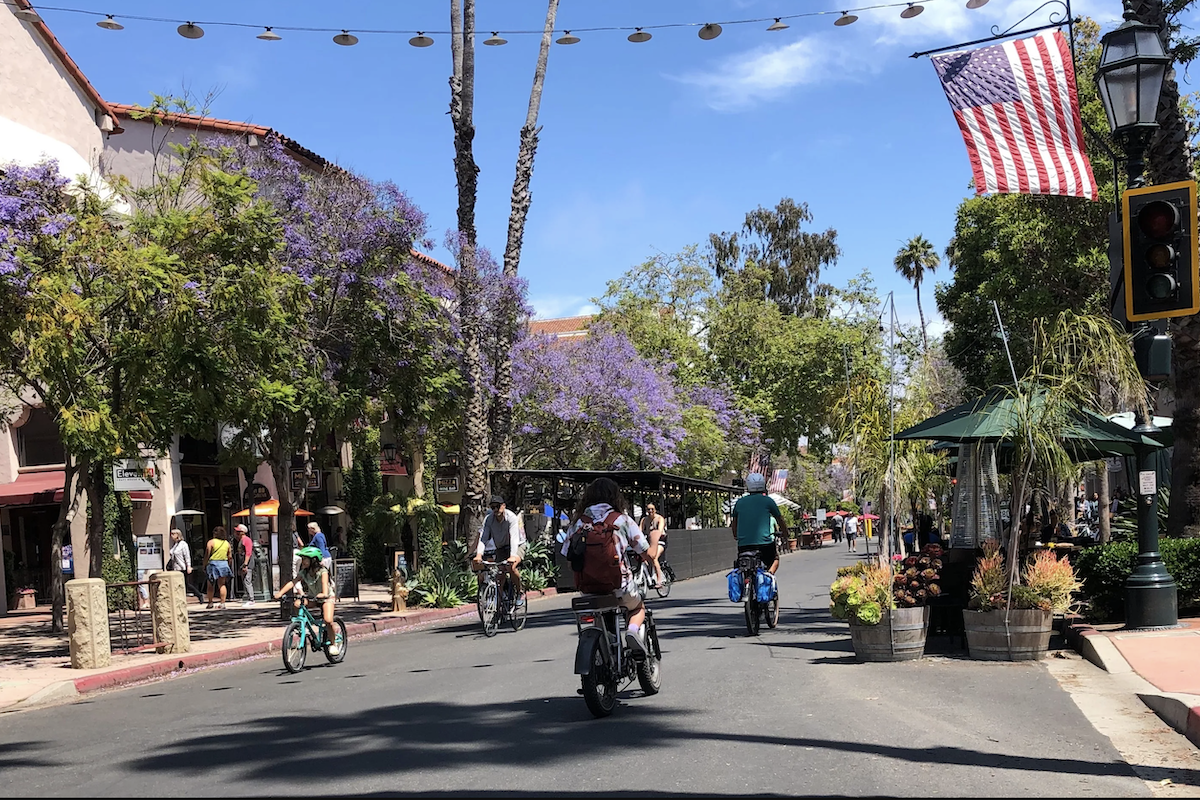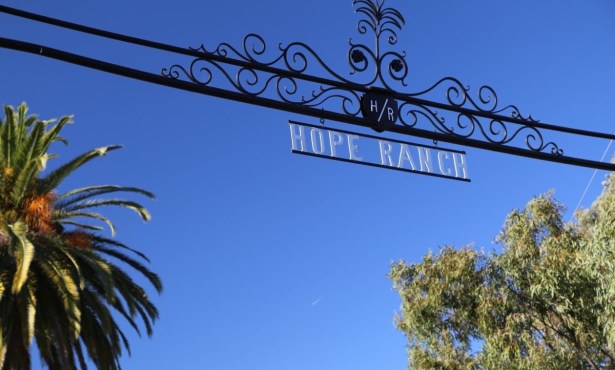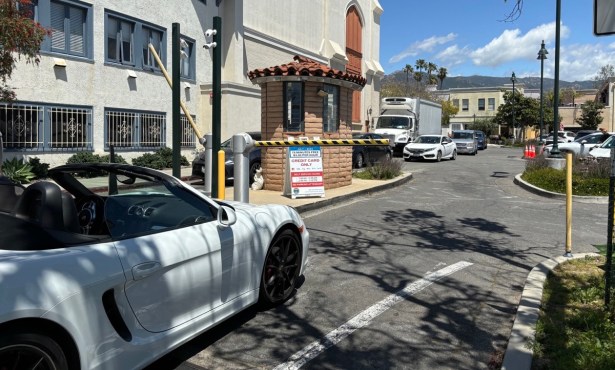New Bike Lanes Approved for Middle of Santa Barbara’s State Street
City Council Votes to Spend $55,000 to Paint Not-Green Lanes Down Eight Blocks of City’s Main Drag

After much hand-wringing over City Hall’s cash-strapped finances and whether State Street reflects a generalized state of self-inflicted urban decline, Santa Barbara’s City Council voted 5-2 to spend $55,000 to paint a bike lane down the middle of eight blocks of State Street.
By placing the two lanes — each about five feet wide — down the middle of the 500 to the 1200 blocks of State Street, the council’s hope is that pedestrians will no longer feel quite so imperiled by the prospect — and, on occasion, the reality — of speeding cyclists in general and of e-bike riders in particular. Currently, there are no designated bike lanes on the street, so cyclists slalom and weave in and out of the path of oncoming pedestrians.
The bike lanes, it was stressed, will not be painted the loud green that generated the same aesthetic hostility that greeted a prior effort to direct bike traffic on the city’s recently pedestrianized mall. The white bike lanes will run down the center of the street with a yellow stripe separating the lanes according to directional flow.
While $55,000 may not sound like a lot, city coffers are depleted enough that city planners suggested dipping into funds that would otherwise go to repairing the exceptionally degraded streetscape of the 1200 block of Nopal Street. Nopal Street residents would have to wait an additional year for street repairs that everyone agreed were much-needed.
Councilmember Eric Friedman suggested dipping into city reserves to cover the cost of bike-lane striping, and when that didn’t fly, he voted against the proposal, which will eat into the general fund.
Mayor Randy Rowse noted with exasperation how City Hall had already paid to stripe partial bikes lanes — with the loud, offending green — and then paid to have that those designated lanes sandblasted off. The idea of painting yet another bike lane Rowse greeted with the weary incredulity of someone who knew he didn’t have the votes.
If and when City Hall signs a contract with a micro-mobility shuttle — akin to the electric golf carts seen in airports — it appears they will be sharing the bike lane space. Councilmembers heard how the use of micro-mobility shuttles —coupled with a resurrection of MTD’s waterfront shuttle service — could help reinvigorate downtown. All those shuttles, however, would cost about $1 million.
Likewise, the councilmembers affirmed their commitment to allowing northbound traffic on the 1200 block of State Street so that Granada Theatre patrons — especially those with mobility challenges — can be dropped off in front of the theater. Unresolved was whether a diamond steel ramp would suffice or whether a new curb cut would be required. All these were short-term fixes the council is now contemplating to address what Mayor Rowse described as “the county fair” effect of the pedestrian plaza while the State Street Advisory Committee struggles to hash out a vision for the long-term future that packs a “wow” punch powerful enough to entice visitors and residents alike.



